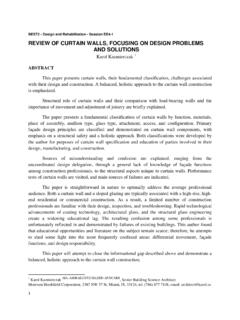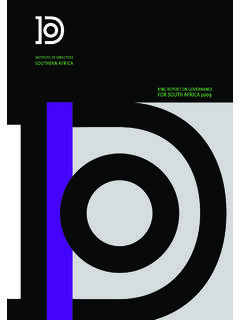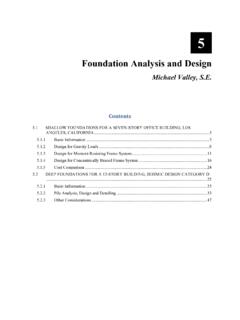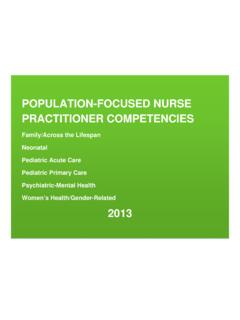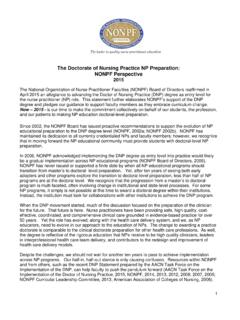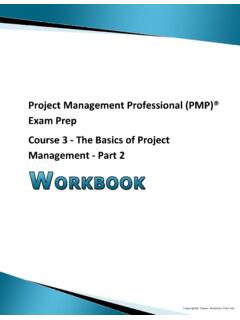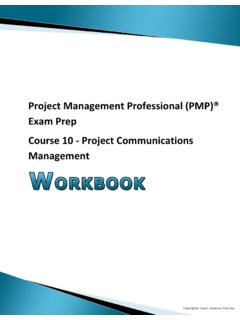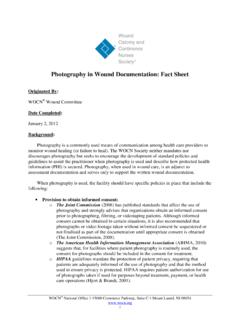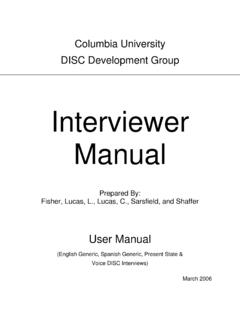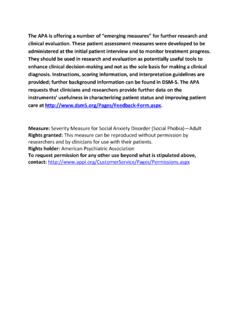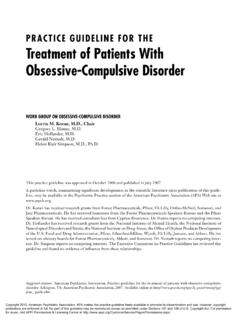Transcription of The DLA-20 – Finally… a Useful Functional Assessment
1 11/15/18 1 The DLA-20 a Useful Functional Assessment Scott J. Westbrock, MSW, LICSW Jane R. King, PsyD, LP This is an informational session about the DLA-20 . Following this session, you will not be certified to use the DLA-20 . Therefore the full instrument cannot be distributed. Focus on Functioning: Better Compliance & Outcomes State and federal funding agencies have changed laws and standards that affect funding for services provided. How can we comply with state/federal regulations when billing Medical Assistance, Medicare or a 3rd Party Payer?
2 Establish medical necessity Make rehabilitation your treatment goal and outcomes measurable Both requirements can be addressed if you focus on client assessed needs: Having the right tools makes it easier Measure impact of symptom severity on ADLs: Mild, Moderate, Severe, Extremely Severe. Tie assessed needs to objectives! Medical Necessity & Rehabilitation Appropriately qualified practitioner identifies & targets clinically appropriate services and interventions at appropriate intensity and duration As directed by an Individualized Service Plan Designed to improve functioning and symptoms or prevent their worsening As based upon assessed needs and an approved diagnosis.
3 Source: Bill Schmelter, MTM Team Consultant Tracer Model of Review from an Auditor s Perspective Functional Assessment Wants State and program administrators: Academic, clinical and behavioral health assessments that justify rehabilitative services and support individual recovery. Providers: Assessment tools that drive decisions on effective treatment options and help determine goals. Decisions about how to address serious symptoms and impaired Levels of Functioning require specific Levels of Care that are evidence-based and tied to lengths of stay that can be routinely reviewed to ensure progress toward outcomes.
4 The DLA-20 Functional Assessment 11/15/18 2 The Daily Living Activites-20 ( DLA-20 ) Developed by Willa Presmanes, , MA in Community & Organizational Psychology, Statistics In Counseling Psychology JCAHO confirmed face validity (1998) CARF currently lists the tool for approved use SEMHMR awarded the DD/MR (for moderate-severe diagnoses) version as valid outcomes (2002) The National Council has supported implementation for over 13 years. Specifically pointed out by Linda Rosenberg during her opening keynote at NATCON 2017! Approved by DHS to be used as the FA for CCBHCs in Minnesota The DLA-20 Identifies medically necessary data: current and co-occurring symptoms Level of Functioning.
5 Reliably identifies daily living and primary health problems, stresses. Accurately targets treatment interventions in appropriate levels of care. Records data for prescribing medications. Useful for measuring change over repeated measures, and is time-sensitive. Valid for reporting outcomes to individuals, providers, payers and administrators. Signs and symptoms of mental illness are not the sole focus of medical necessity the impact on level of functioning in daily living correlates with intensity of care needed to effect change. How Does It Work?
6 Discussing, Anchoring & Scoring How it 25-30 minute, one page summary Functional Assessment Designed to be an objective tool for use by trained direct-care staff 20 specific daily living activities where clients may demonstrate various impairments Nutrition, money, hygiene, productivity Level of impairment for each type of activity is rated on a 7-point scale (1-7) Lower numbers indicate more severe impairment A 7 indicates a complete absence of impairment for that activity Measures are monitored for change over time repeat administrations every 3-6 months.
7 Scoring the DLA-20 For each of the 20 daily living activities, you will assign a score (1-7) that reflects the client s LOF for past 30 days. It is a snapshot of the past month of your client s life, based on the general population not caseload or others with same disorders. Scoring Functional STRENGTHS A strength means that, compared to the rest of the population, client s functioning is within normal limits. Score these activities as 5, 6, or 7 Scoring Functional CHALLENGES A weakness means that, compared to the rest of the population, client s functioning is impaired and not within normal limits Score these activities as 1, 2, 3, or 4 Use the Benchmark Anchors 11/15/18 3 Scoring the DLA-20 Completed concurrently with client.
8 Using information from previous 30 days Sum of all 20 scores Average scores (total/20) Multiply by 10 for Estimated mGAF If functioning varied in the last 30 days, rate the lowest score. Once you pick a number, look at the anchor below to make sure a lower rating is not more accurate. Consider impairments in functioning due to physical limitations AND those due to mental impairments. Do not consider environmental limitations or cultural nuances ( no jobs or schools or housing available - it is still a problem <=4). Scoring the DLA-20 Must address at least 15 items.
9 All 20 are always applicable. The score is not necessarily correlated with the client s self-reported functioning YOU have the anchors, the answer sheet: trust your own Assessment of data described in anchors defining strengths & weaknesses. Pay Attention to integrated DLA Health-Care Issues in RED ( , scores <=3) 1. Health Practices (mental, physical) 2. Housing Stability, Maintenance 3. Communication (mental status) 4. Safety (suicidal, homicidal) 5. Managing Time 6. Managing Money 7. Nutrition 8. Better Problem Solving Around Signs, Symptoms 9. Family Relationships 10.
10 Alcohol/Drug Use 11. Leisure 12. Community Resources 13. social Network 14. Sexual Health 15. Productivity 16. Coping Skills 17. Behavior Norms 18. Personal Hygiene (inability to care for basic self-care, hygiene) 19. Grooming 20. Dress DLA-20 1. Health Practices DLA-20 ANCHORS 1 - Extremely severe Functional impairment, needs pervasive supports 2 Severe Functional impairment, needs extensive supports 3 Serious impairment with serious symptoms; intense supports 4 Moderate impairment; routine, frequent support for DLA 5 WNL/ Strength Mild Functional impairment, intermittent support 6 WNL/ Strength Intermittent mild impairment, needs low level supports 7 WNL/ Strength Optimal independence with no support Health Practices: 1 Rate independent self-care for physical health (PH) and mental health (MH), including managing moods, medications, illness management Evidence of danger to self/others due to MH.
